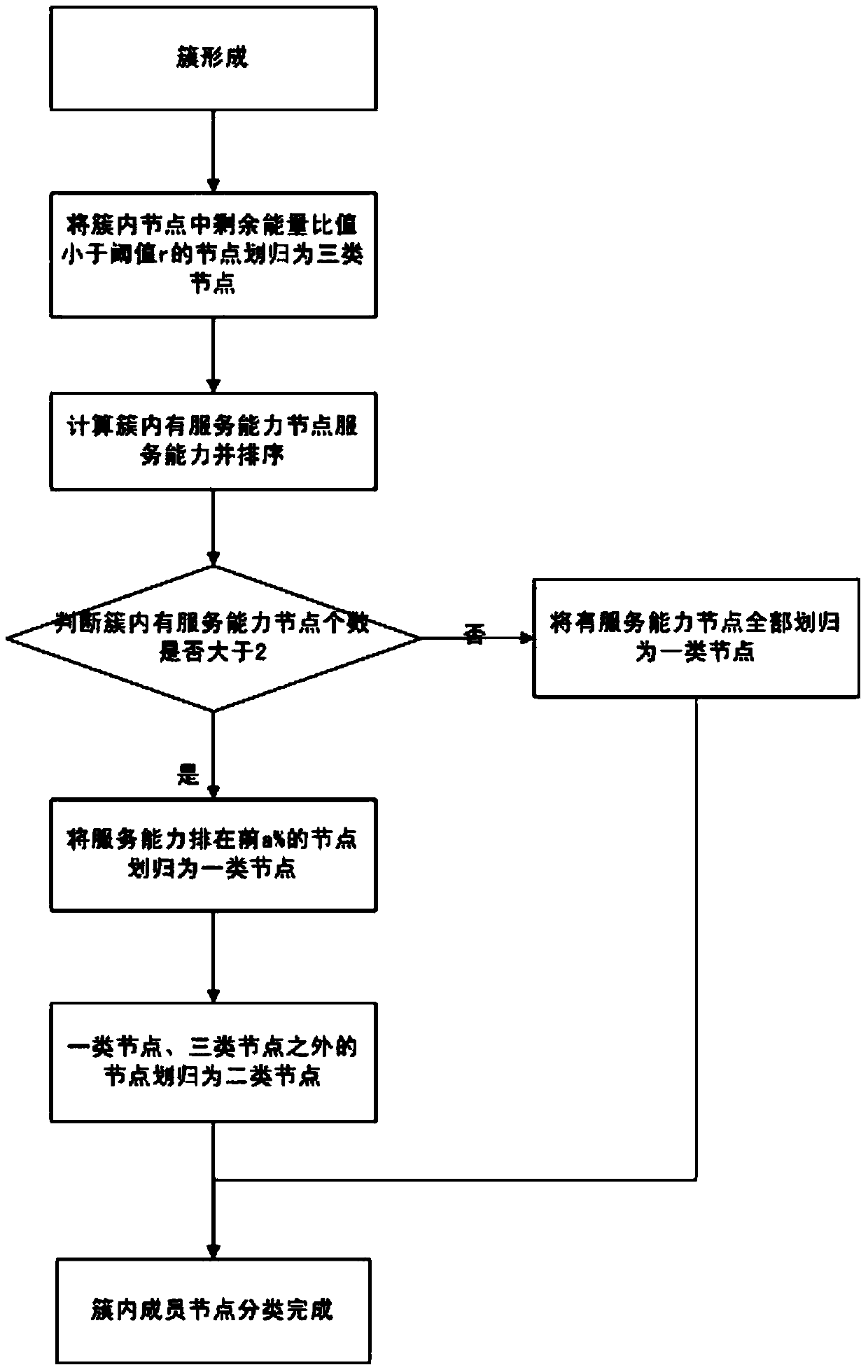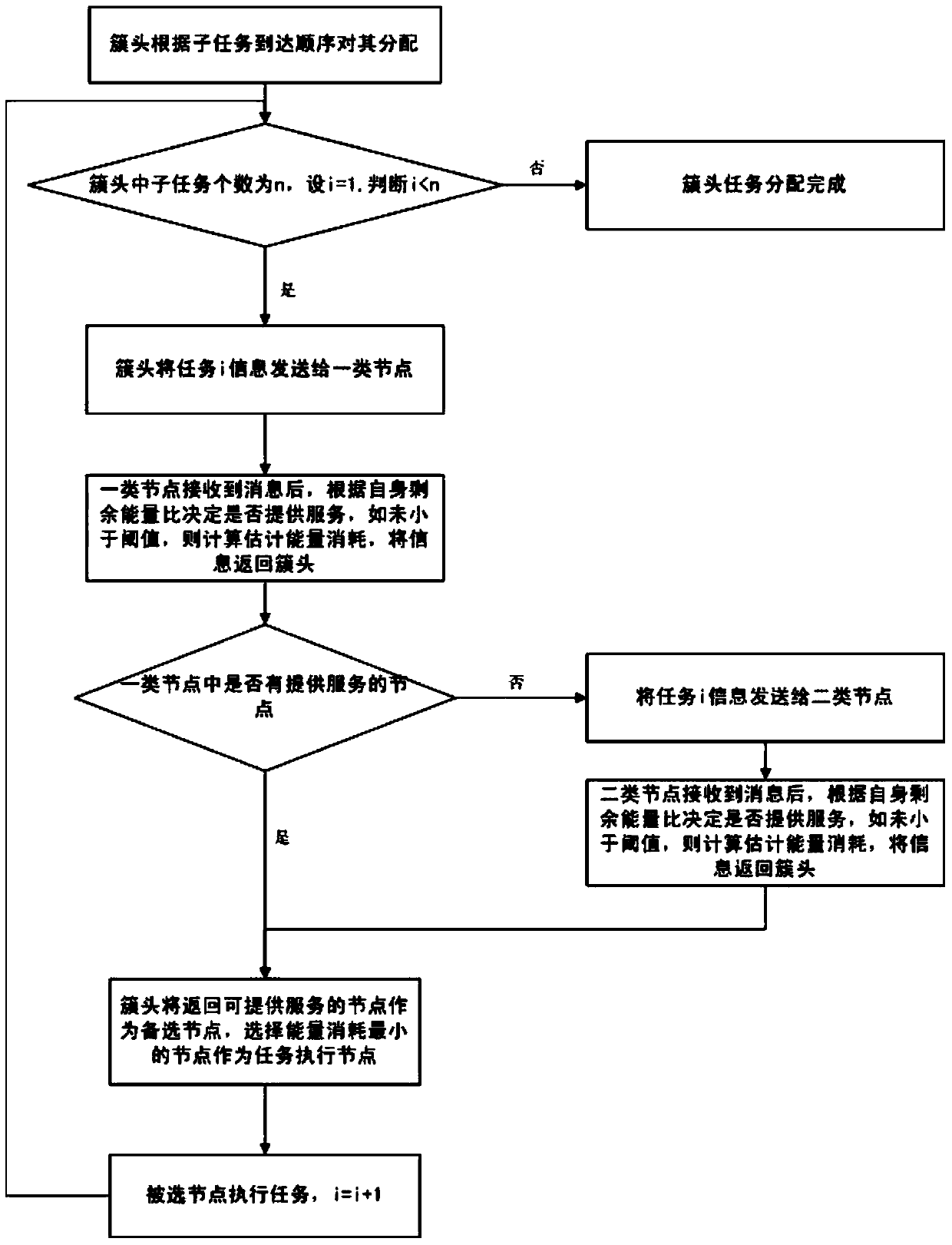Clustering-based complex task collaborative problem-solving method for wireless sensor network
A wireless sensor and complex task technology, applied in wireless communication services, network topology, wireless communication, etc.
- Summary
- Abstract
- Description
- Claims
- Application Information
AI Technical Summary
Problems solved by technology
Method used
Image
Examples
Embodiment Construction
[0067] The present invention will be further described in detail below in conjunction with the accompanying drawings and embodiments.
[0068] like figure 1 , 2 , 3, a cluster-based complex task decomposition method in sensor networks, the steps include:
[0069] Step 1: Tasks are hierarchically divided according to the task DAG graph. When assigning tasks, they are assigned layer by layer from top to bottom, and each layer has several clusters;
[0070] Step 2: When the event of the task occurs, the cluster where the incident occurs is used as the central cluster, and the cluster head of the central cluster distributes the tasks in the layer;
[0071] Step 3: When the cluster residual energy ratio of the central cluster is less than the set threshold, send a request message to the surrounding one-hop cluster, and if the residual energy ratio of the surrounding one-hop cluster is not less than the threshold, then accept the request and act as a cooperative cluster of the cen...
PUM
 Login to View More
Login to View More Abstract
Description
Claims
Application Information
 Login to View More
Login to View More - Generate Ideas
- Intellectual Property
- Life Sciences
- Materials
- Tech Scout
- Unparalleled Data Quality
- Higher Quality Content
- 60% Fewer Hallucinations
Browse by: Latest US Patents, China's latest patents, Technical Efficacy Thesaurus, Application Domain, Technology Topic, Popular Technical Reports.
© 2025 PatSnap. All rights reserved.Legal|Privacy policy|Modern Slavery Act Transparency Statement|Sitemap|About US| Contact US: help@patsnap.com



